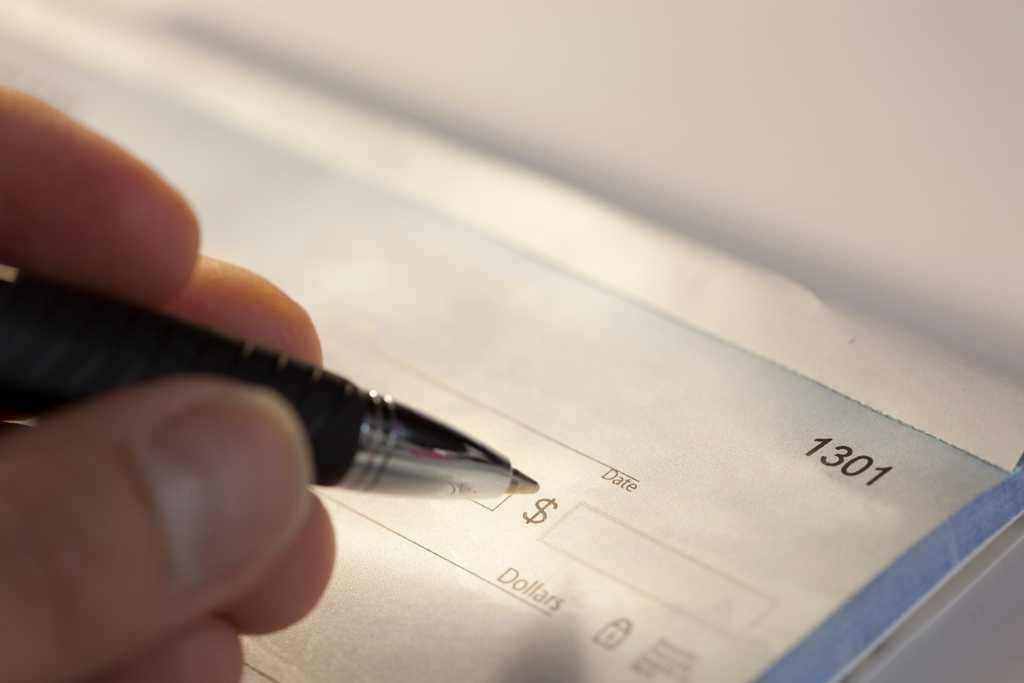If you need to make a large purchase, like a new car or boat, you can’t always put the full balance on your credit card. Many sellers will ask for a certified check instead, which is typically more secure and avoids costly credit card processing fees. If you’ve never used a certified check, we’re going to explain how they work, how much they cost, and how you can accept a certified check safely while avoiding fraud.
What is a certified check?
When you write a certified check, the money comes directly out of your personal checking account. The check contains basic information, like your name, account number, and your bank information. In order for the recipient to deposit the funds, you and a bank representative must sign the certified check.
One important thing to know about certified checks is that they are guaranteed by your bank. When the bank representative signs the check, they certify that you have enough money in your account to cover the cost. You will typically see the words “guaranteed” or “certified” somewhere on a certified check.
What is a certified check used for?
Certified checks can be used to pay for just about anything. However, they are most commonly used for large purchases, like a new car or a downpayment on a house. Depending on the amount of money you need to transfer, the recipient may ask for a certified check to ensure you have enough funds to cover the cost.
In addition, a certified check may be used when you want to buy something and the seller cannot accept other forms of payment. For example, some car dealerships cap the amount of money you can charge on a regular credit card. If you purchase a vehicle that costs more than the maximum limit, you may need to use a certified check as an alternative.
How does a certified check work?
A certified check works similarly to a regular check from your personal checkbook. You write the check to the recipient of the funds, and the buyer receives the money when they deposit it.
The main difference between a certified check and a regular check is that a certified check goes through a certification process on the backend from your bank. Before the check clears, a representative will review your account to make sure you have sufficient funds, then they will freeze the funds, and sign the check to “certify” it.
Another difference between regular checks and certified checks is how you get them. With a personal check, you can write the check anytime, anywhere, from your checkbook. There’s no bank signature required. With a certified check, you have to visit your bank in-person to get one.
How much does a certified check cost?
To get a certified check from your local bank or credit union, you might have to pay a small fee. It’s usually only a few dollars, and not every bank charges a fee. If you need a certified check, call your bank to see what fees you might have to pay beforehand.
Certified check vs. cashier’s check
Another popular type of check is the cashier’s check, which is different from a certified check.
With a cashier’s check, the funds are pulled from the bank’s money, not your personal account. In order to get a cashier’s check, you must transfer funds from your personal checking or savings account into the bank’s account first. Then, a bank representative will write the check with the bank’s name and account number, plus the names of the seller and buyer.
Essentially, a cashier’s check will never bounce, because the money gets withdrawn from the bank’s account, which is significantly larger than a personal account. That’s why sellers may prefer to receive a cashier’s check vs. a personal check.
Like with a certified check, there’s usually a fee to get a cashier’s check, and you have to visit your bank in-person to get one. Keep in mind that some banks offer certified checks or cashier's checks, but not both. If you need a bank-issued check, it’s a good idea to contact your bank or credit union and find out what type of checks they offer.
One of the biggest benefits to using a cashier’s check over a certified check is that cashier’s checks are typically more secure, and less susceptible to fraud. Cashier’s checks are often watermarked and sometimes have multiple signatures, which makes it more difficult to counterfeit. For this reason, some sellers specifically request cashier’s checks for large purchases.
How to avoid fraud with certified check
Fraud is more common with certified checks, especially because they can be copied and altered. Fortunately, there are easy ways to avoid fraud if you want to accept certified checks for large purchases.
When you receive a certified check, you should always contact the bank it came from. Rather than calling the phone number listed on the check, search for the bank’s phone number online, in case the number on the check is fake.
It’s also a good idea to read the check carefully for misspellings, grammatical errors, or anything else that raises a red flag before you make the deposit. Also, make sure to double check the amount of money listed on the check. If the amount is incorrect, call the bank to verify.

